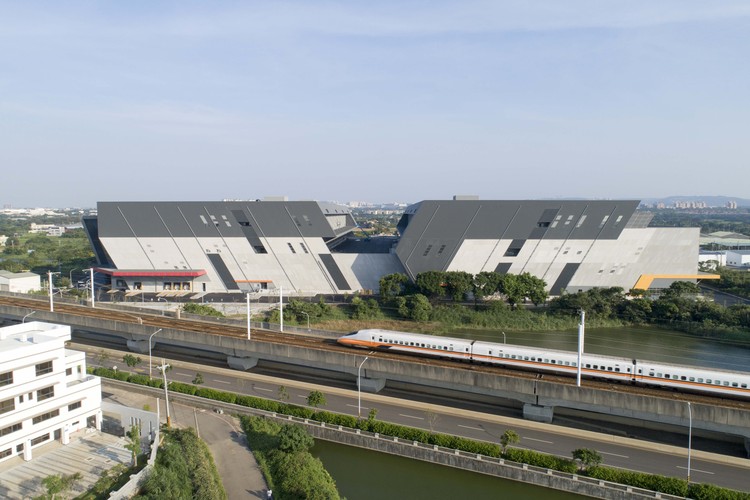Control Club
2015-11-27 22:00
架构师提供的文本描述。位于历史上的布加勒斯特中心,现在是控制俱乐部的19世纪的房子,曾经是著名的柏林餐厅,在社会主义时代非常受欢迎。控制俱乐部目前可能被认为是布加勒斯特最受欢迎的现场音乐俱乐部。这个俱乐部的项目的目的是以柏林墙为概念,找回这个空间(柏林餐厅)的原貌。
Text description provided by the architects. Located in the historical center of Bucharest, the 19th century house that now hosts the Control Club used to be the famous Berlin restaurant, very popular in the socialist era. Control Club is likely considered, at the moment, the most popular live music club in Bucharest. The project aim for this club was to retrieve the former identity of the space (the Berlin restaurant), using the Berlin Wall as concept.
这个概念是由来自特定领域的感官刺激组成的直接和间接刺激来建立起来的,这些感官刺激会产生一种心理的紧张状态。“铁幕”、政治、军事和意识形态上的屏障曾经将德国一分为二,它的象征是钢结构镀钢网。在舷梯板上,在钢网后面,可以看到“铁幕”、“政治、军事和意识形态的障碍”。一个人可能会感觉到由天花板的压力和网眼的围护所产生的张力,而这个网眼是可以看到的。通过在大厅的垂直轴和水平轴上旋转舷梯板的体积,也获得了环境张力。这会导致地面缩小,显示幽闭恐惧症的感觉随着楼梯通道面积的扩大而同时消散了。结构向大厅中心倾斜,产生受控的不平衡。
The concept builds itself up by the use ofdirect and indirectreferences comprised ofsensory stimuli from specific areas, that generate a strainedstate of mind.The “Iron Curtain”,political, military, and ideological barrier that used to divide Germany in two, is symbolised by the steel structure plated with steel mesh.Up on the gangplank, behind the steel mesh, one potentially feels the tension generated by the pressure of the ceilling and the enclosure of the mesh through which the stage is visible. The ambiental tension was also achieved by rotating the volume of the gangplank on the vertical and horizontal axes of the hall. This results in agradual narrowing towards the scene, suggesting the claustrophobic feeling ballanced at the same time by the enlargement of the staircase acces area. The structure becomes tilted towards the center of the hall, generating a controlled imbalance.
我们选择了一种重要的材料如șchiț大理石,因为它是在原来的地板上使用的空间。我们没有把它放在地板上,而是选择把它作为酒吧的主要材料。一种戏剧性的口音是通过背光Rușchiț(一种大理石)而产生的,这与混凝土板和钢铁制品的冷感形成了鲜明的对比。现场对面的天花板和墙壁上覆盖着一层有孔的桦木胶合板,以便对音乐厅进行适当的声学处理;墙壁被剥去,露出砖层,并涂上一层带暗示色彩的灰色;灰泥柱和可追溯到科曼斯特时代的檐篷被保留下来,作为提醒。柏林餐厅最初的吊灯的使用创造了一个巨大的发光装置,但仍然暗示着过去的时代。
We selected as an important material the Rușchița marble, as it was used on the original floor of the space. Instead of placing it on the floor, we chose to use it as the main material for the bar. A dramatic accent was created by backlighting the Rușchița marble, in contrast with the cold feel of the concrete screed and the steel work. The ceiling and the wall opposite to the scene were covered with perforated birch plywood in order to achieve a proper acoustic treatment specific for concert halls.The walls were stripped to reveal the brick layer, and painted in a suggestive colour grey.The plaster pillars and cornice dating from the comunist era, were kept as a reminder. The use of the original chandeliers of the Berlin restaurant created a dinamic luminous installation while still suggesting the past era.
控制带来了历史的生活,同时发挥戏剧视觉和创造一个戏剧空间是紧张和闪光,适合夜生活。
Control brings history to life, whilst playing with dramatic visuals and creating a theatrical space that is strained and iridescent, suitable fornightlife.
Architects LAMA Arhitectura
Location Strada Constantin Mille 4, București, Romania
Category Interiors Architecture
Photographs Radu Malașincu
 举报
举报
别默默的看了,快登录帮我评论一下吧!:)
注册
登录
更多评论
相关文章
-

描边风设计中,最容易犯的8种问题分析
2018年走过了四分之一,LOGO设计趋势也清晰了LOGO设计
-

描边风设计中,最容易犯的8种问题分析
2018年走过了四分之一,LOGO设计趋势也清晰了LOGO设计
-

描边风设计中,最容易犯的8种问题分析
2018年走过了四分之一,LOGO设计趋势也清晰了LOGO设计




























































